Africa is home to a remarkable array of majestic eagles, each embodying the spirit of the continent’s diverse landscapes.
From the dense rainforests to the expansive savannas, these awe-inspiring birds of prey command the skies, symbolizing strength, freedom, and the untamed beauty of the wilderness.
Here, we delve into the realm of Africa’s avian royalty, unveiling the splendor of the ten eagles that grace its skies.
The martial eagle, with its commanding presence, surveys the grasslands, while the crowned eagle, a master of the dense forests, reigns over the treetops.
The African fish eagle, a masterful hunter, rules the waterways, and the powerful Verreaux’s eagle soars over rocky cliffs.
As we explore the fascinating world of these ten eagles, their distinct characteristics and roles in the African ecosystem come to life, showcasing the unparalleled beauty and resilience of these magnificent birds.
10 Eagles of Africa
Let’s learn about the skies of Africa as we unravel the tales of the continent’s ten remarkable eagles, each a symbol of strength, resilience, and the untamed spirit of the African wilderness.
1. African Fish Eagle
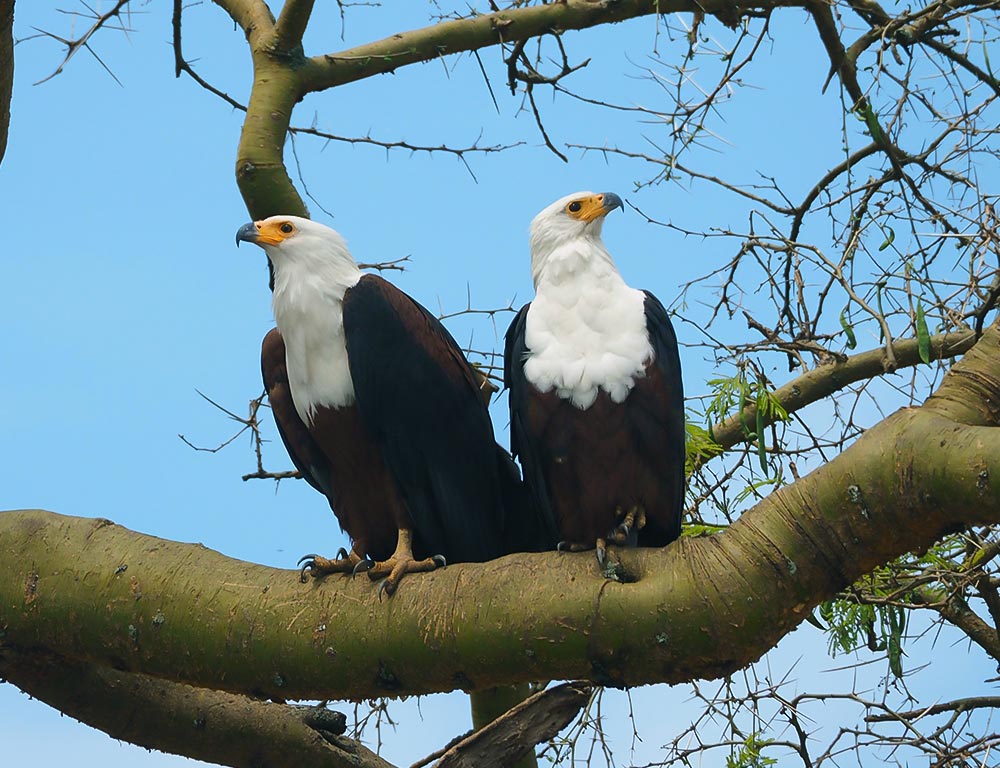
- Scientific Name: Haliaeetus vocifer
- Life Span: 20-30 years
- Size: 63-75 cm
- Weight: 2.5-3.5 kg
- Food: Mainly fish, supplemented by birds and small mammals
- Wingspan: 200-240 cm
- Status: Least Concern (IUCN)
The African Fish Eagle, adorned with distinctive plumage, is a masterful hunter, primarily preying on fish near freshwater bodies.
Its iconic, evocative call often resonates near lakes and rivers. Living near waterways, these eagles build large stick nests in trees, providing a secure vantage point for hunting.
With a keen eye and powerful talons, they swoop down to snatch fish from the water’s surface, showcasing remarkable precision in their hunting technique.
These eagles are not only skilled hunters but also adept at navigating the complex ecosystems surrounding Africa’s lakes and rivers.
2. Martial Eagle
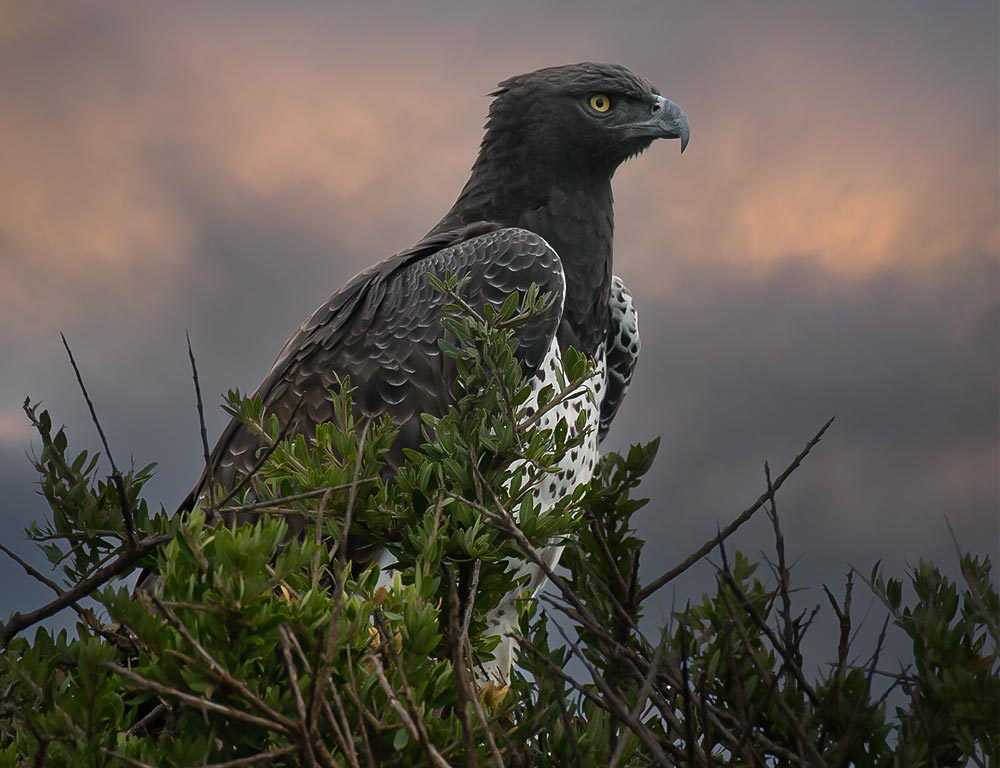
- Scientific Name: Polemaetus bellicosus
- Life Span: 14-20 years
- Size: 78-96 cm
- Weight: 3.1-4.6 kg
- Food: Varied diet including mammals, birds, and reptiles
- Wingspan: 188-260 cm
- Status: Vulnerable (IUCN)
The Martial Eagle, Africa’s largest eagle, dominates the savannas with its powerful build and keen predatory instincts. Preferring open landscapes, they construct massive nests on cliffs or in large trees.
With exceptional eyesight, they spot prey from great heights and execute impressive aerial maneuvers during hunting. These eagles are versatile hunters, preying on a variety of animals, from hares to monitor lizards.
Despite their commanding presence, their vulnerable status calls attention to the need for conservation efforts to protect these majestic raptors.
3. Wahlberg’s Eagle
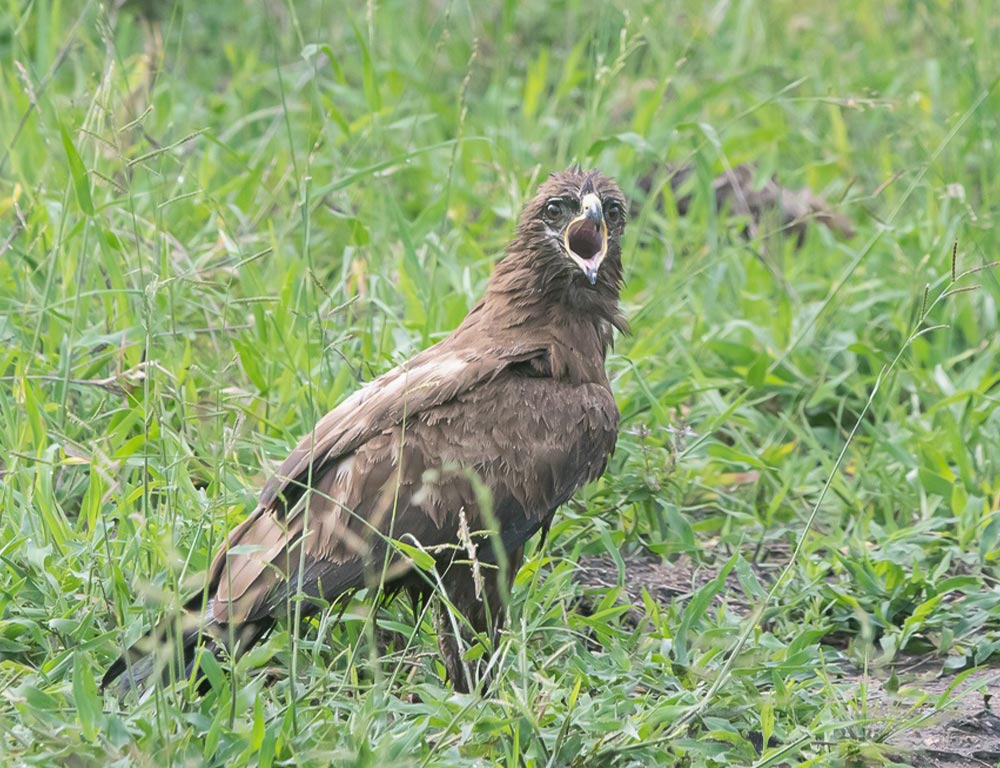
- Scientific Name: Hieraaetus wahlbergi
- Life Span: 18-23 years
- Size: 51-61 cm
- Weight: 0.9-1.6 kg
- Food: Mainly small mammals and birds
- Wingspan: 130-148 cm
- Status: Least Concern (IUCN)
Wahlberg’s Eagle, a smaller but equally remarkable species, thrives in diverse habitats, from woodlands to semi-deserts.
These eagles construct nests on treetops, displaying adaptability in their choice of nesting sites. Known for their agility, they skillfully navigate through dense vegetation during hunts, preying on small mammals and birds.
Their ability to adjust to varied environments contributes to their Least Concern status, but ongoing conservation efforts remain crucial to sustain their populations amidst potential habitat changes.
4. Verreaux’s Eagle
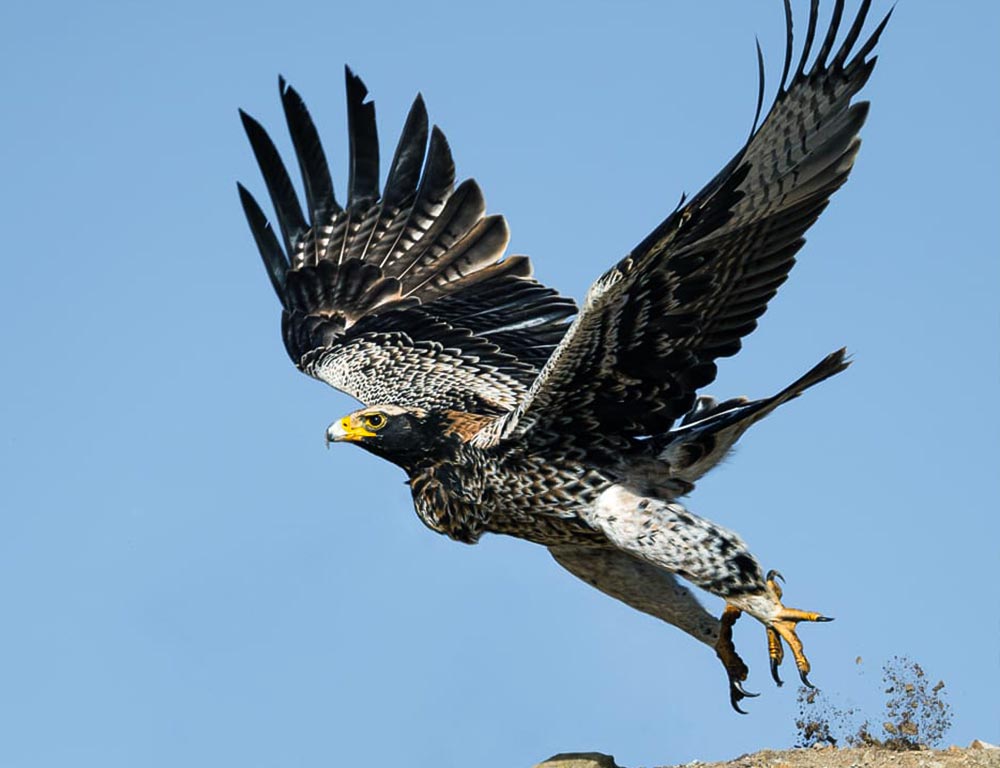
- Scientific Name: Aquila verreauxii
- Life Span: 20-30 years
- Size: 75-96 cm
- Weight: 3.0-5.5 kg
- Food: Mainly rock hyraxes, occasionally small mammals and birds
- Wingspan: 190-225 cm
- Status: Least Concern (IUCN)
Verreaux’s Eagle, an impressive raptor, is often found in mountainous regions, soaring above rocky landscapes.
With powerful talons and a robust build, they primarily feed on rock hyraxes, showcasing specialization in hunting these agile prey. Nests are typically constructed on cliff ledges, providing strategic locations for hunting and raising their young.
Their adaptability to rugged terrains and stable population status emphasizes the importance of preserving their habitats and addressing potential threats such as habitat degradation.
5. African Hawk-Eagle
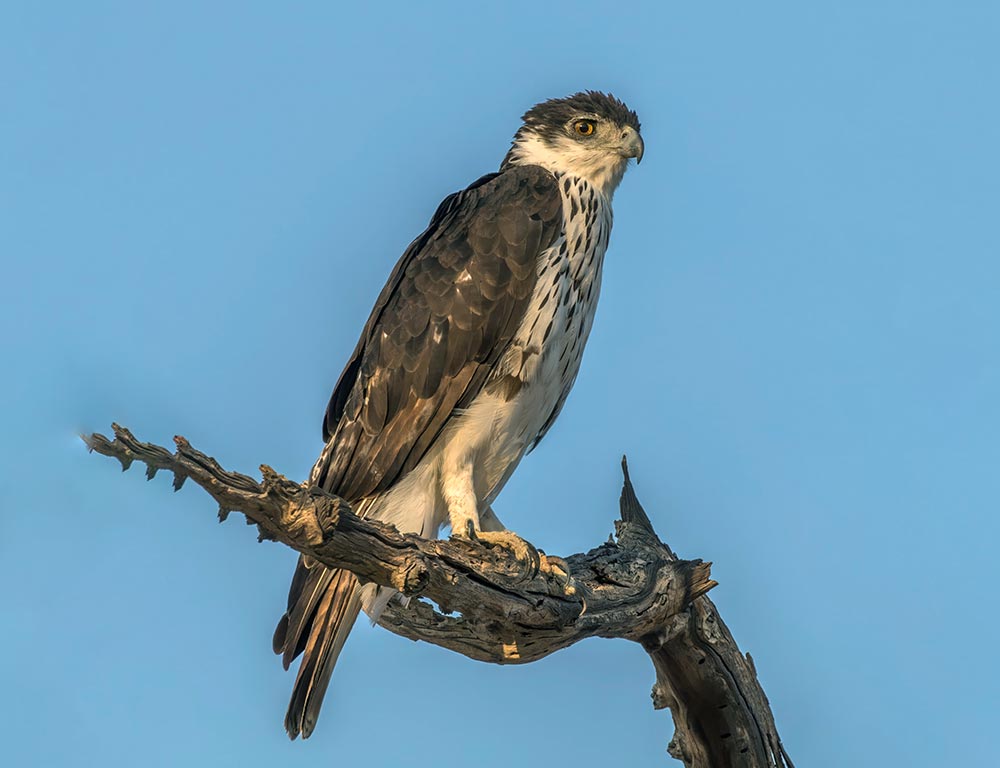
- Scientific Name: Aquila spilogaster
- Life Span: 20-30 years
- Size: 55-65 cm
- Weight: 1.2-2.3 kg
- Food: Mainly birds, occasionally small mammals
- Wingspan: 140-170 cm
- Status: Least Concern (IUCN)
The African Hawk-Eagle, with its striking plumage and piercing eyes, is a skilled hunter inhabiting various wooded landscapes. Known for their agility, they navigate through dense vegetation with ease during pursuits.
Their diet mainly consists of birds, but they occasionally prey on small mammals. Building nests on tall trees, these eagles exhibit adaptability to both closed and open woodland environments.
Despite their Least Concern status, ongoing conservation efforts are essential to safeguard their habitats and address potential threats.
6. Tawny Eagle
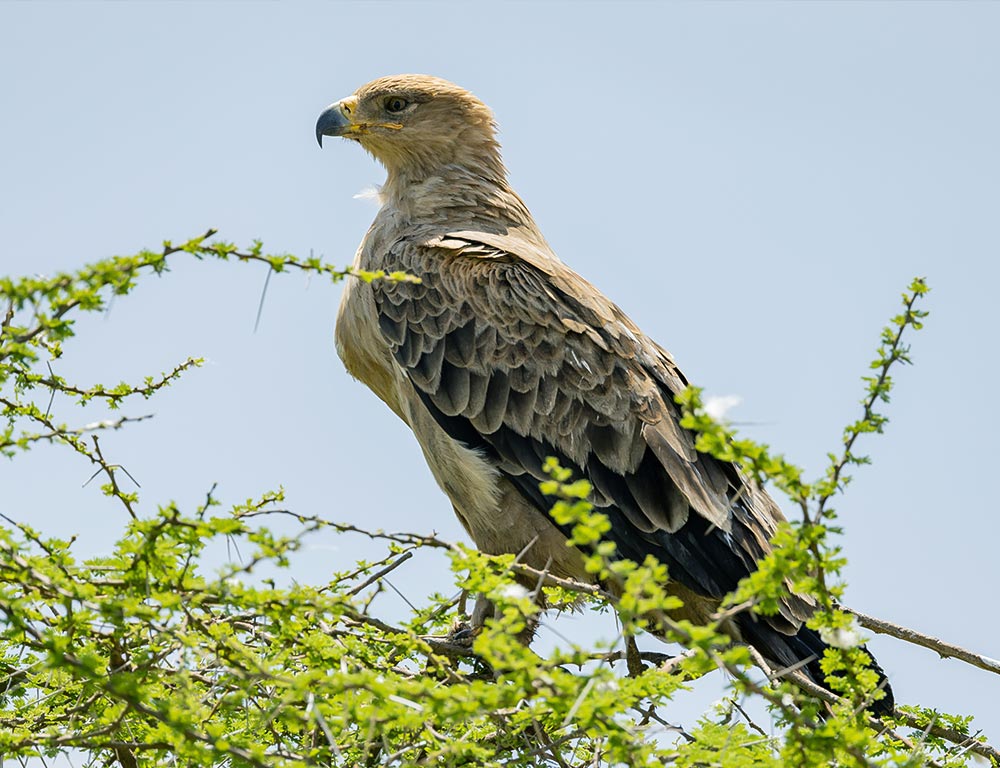
- Scientific Name: Aquila rapax
- Life Span: 16-20 years
- Size: 62-72 cm
- Weight: 2.3-3.9 kg
- Food: Varied diet including mammals, birds, and reptiles
- Wingspan: 160-190 cm
- Status: Least Concern (IUCN)
The Tawny Eagle, a robust and adaptable species, thrives across diverse landscapes, from savannas to semi-deserts. Their diet is versatile, encompassing mammals, birds, and reptiles.
These eagles construct nests on trees or cliffs, showcasing flexibility in their choice of breeding sites. With keen eyesight and a powerful beak, they are skilled hunters, often scavenging when the opportunity arises.
Their widespread distribution and adaptable lifestyle contribute to their Least Concern status, but ongoing habitat preservation remains vital for their sustained coexistence with changing environments.
7. Long-crested Eagle
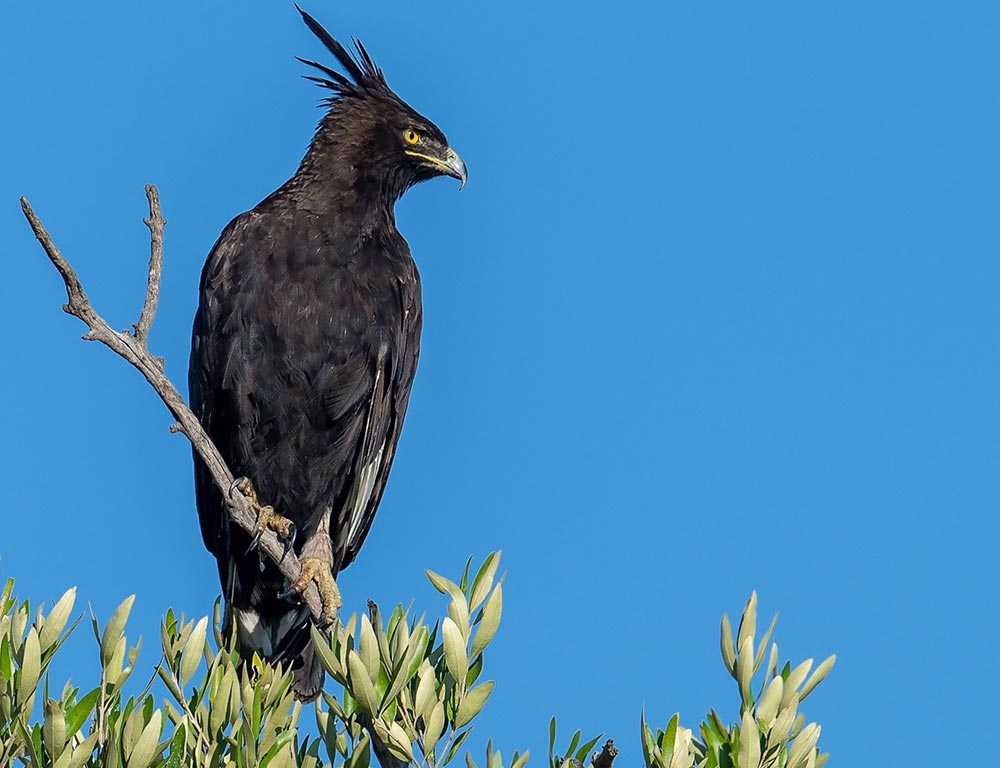
- Scientific Name: Lophaetus occipitalis
- Life Span: 18-23 years
- Size: 56-66 cm
- Weight: 1.0-1.8 kg
- Food: Mainly small mammals and birds
- Wingspan: 140-160 cm
- Status: Least Concern (IUCN)
The Long-crested Eagle, distinguished by its striking crest and elegant plumage, is a medium-sized raptor endemic to Africa.
Thriving in a variety of habitats, from woodlands to grasslands, these eagles display adaptability in their choice of living spaces.
They construct nests on tall trees, showcasing their preference for elevated vantage points. Primarily carnivorous, their diet consists of small mammals and birds.
Despite their Least Concern status, ongoing conservation measures are crucial to ensure the preservation of their diverse habitats and mitigate potential threats such as habitat fragmentation.
8. African Crowned Eagle
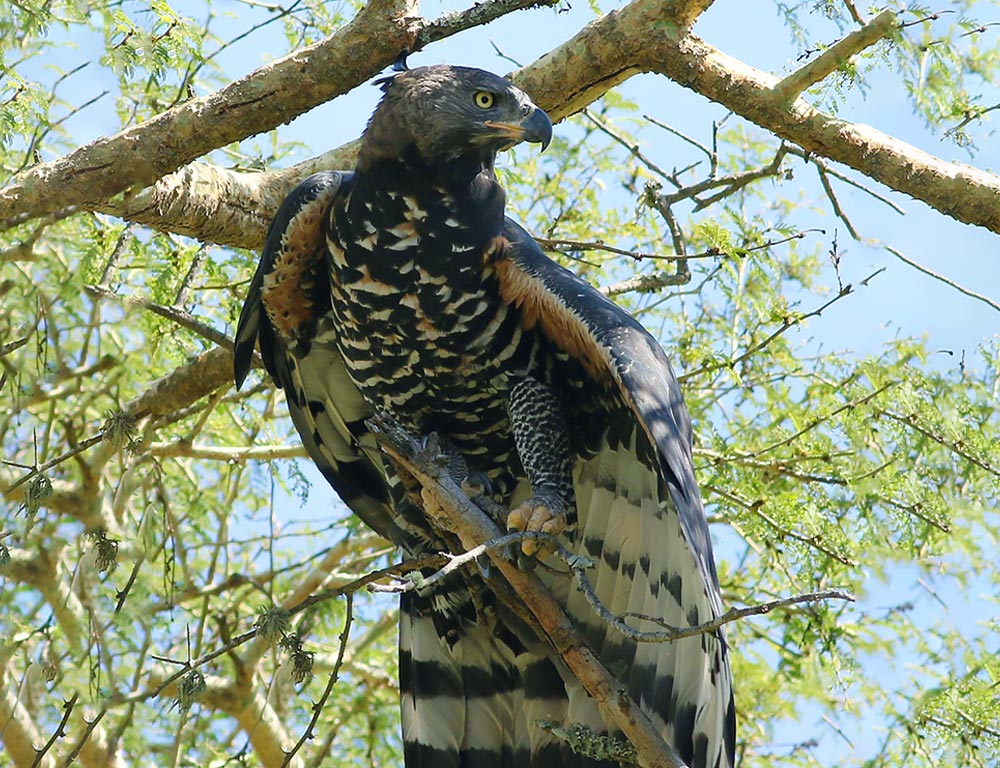
- Scientific Name: Stephanoaetus Coronatus
- Life Span: 15-20 years
- Size: 81-99 cm
- Weight: 3.6-4.6 kg
- Food: Primarily monkeys and other small to medium-sized mammals
- Wingspan: 180-210 cm
- Status: Near Threatened (IUCN)
The African Crowned Eagle, a regal and powerful bird of prey, is known for its impressive size and distinctive crown of feathers. Inhabiting dense forests, these eagles are primarily arboreal, utilizing their powerful talons to navigate through the canopy.
Their diet consists mainly of monkeys and other small to medium-sized mammals. Building large nests on tall trees, the crowned eagle establishes territories within the forest.
The Near Threatened status highlights the importance of conservation efforts to address habitat loss and ensure the survival of this magnificent species in the face of ongoing environmental challenges.
9. Golden Eagle
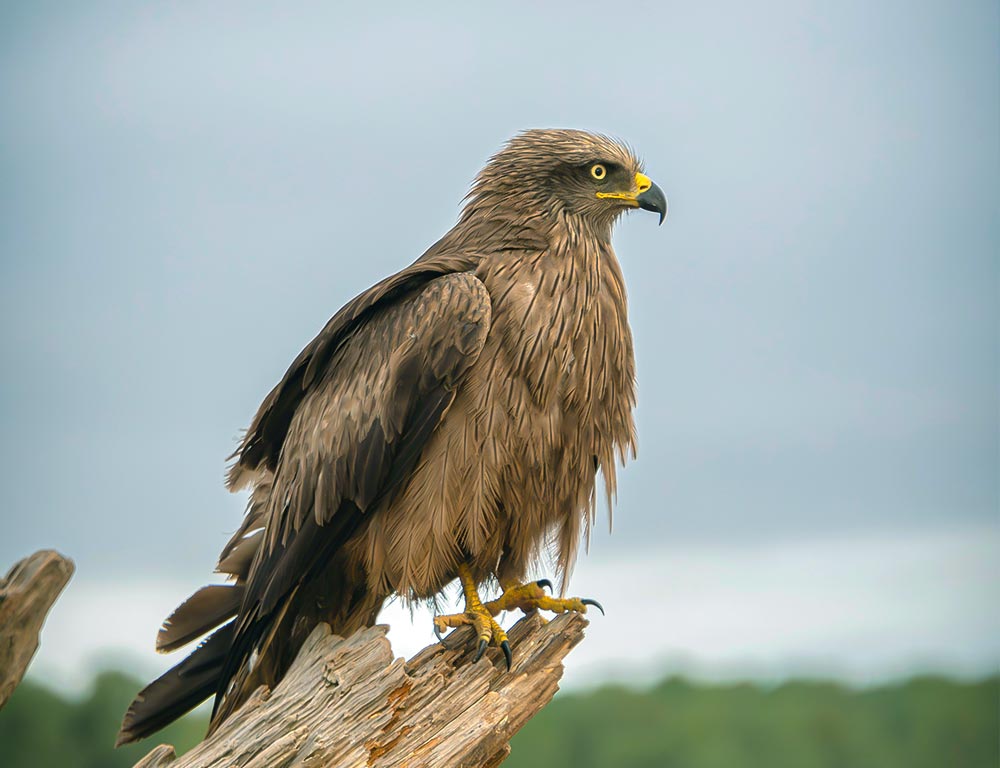
- Scientific Name: Aquila chrysaetos
- Life Span: 20-30 years
- Size: 66-102 cm
- Weight: 2.5-6.7 kg
- Food: Mainly mammals, birds, and carrion
- Wingspan: 182-234 cm
- Status: Least Concern (IUCN)
The Golden Eagle, a majestic and widespread bird of prey, inhabits diverse habitats, including mountains, grasslands, and deserts.
Recognized by their golden-brown plumage and powerful build, these eagles are skilled hunters with a varied diet encompassing mammals, birds, and carrion.
They build large nests, often on cliffs, and engage in impressive aerial displays during courtship. As a symbol of strength and agility, Golden Eagles play an important role in various cultures.
While currently labeled as Least Concern, ongoing conservation efforts are vital to address potential threats such as habitat degradation and human disturbance.
10. Bonelli’s Eagle
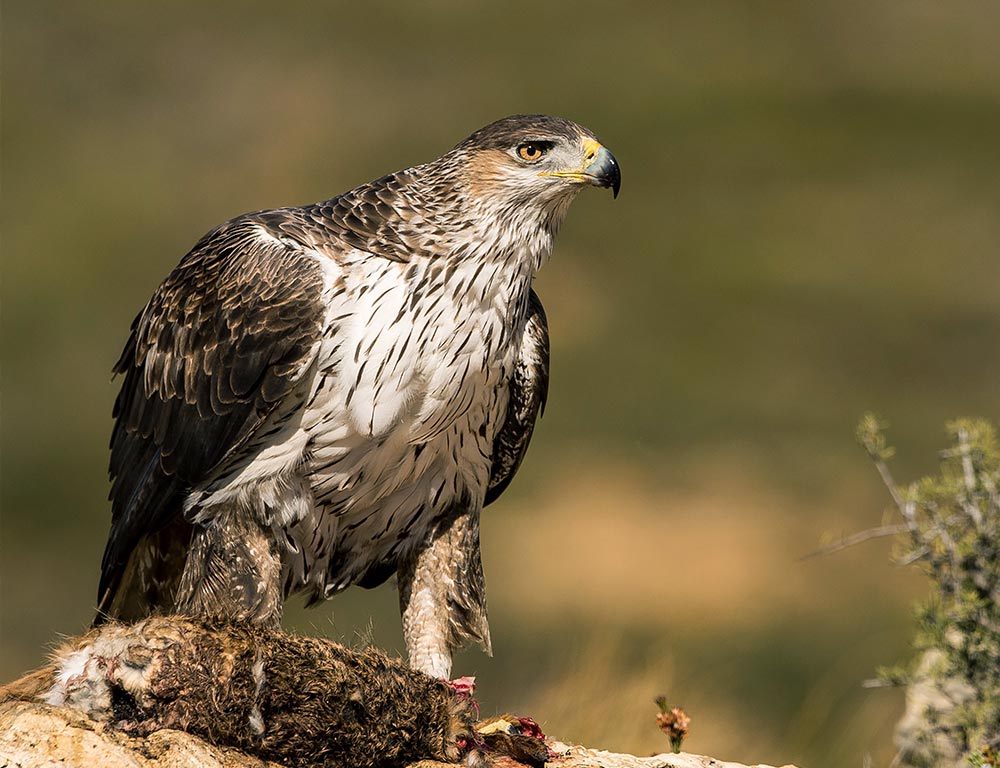
- Scientific Name: Aquila fasciata
- Life Span: 15-20 years
- Size: 58-75 cm
- Weight: 1.5-2.9 kg
- Food: Mainly birds, small mammals, and reptiles
- Wingspan: 146-180 cm
- Status: Near Threatened (IUCN)
Bonelli’s Eagle, an agile and adaptable species, is found across various habitats, including mountains, woodlands, and scrublands.
Identified by its distinctive markings and keen eyesight, these eagles are skilled hunters, preying on birds, small mammals, and reptiles.
They construct nests on cliffs or in tall trees, displaying versatility in their choice of breeding sites. The Near Threatened status underscores the challenges these eagles face, including habitat loss and persecution.
Conservation efforts are crucial to ensure the continued existence of Bonelli’s Eagle, highlighting the delicate balance required for the coexistence of these magnificent raptors with changing landscapes.
Wrapping Up
Africa’s diverse landscapes are graced by an extraordinary array of eagles, each embodying resilience and natural splendor.
From the commanding African Fish Eagle, a symbol of aquatic prowess, to the regal Crowned Eagle reigning over dense forests, these magnificent raptors showcase the continent’s ecological richness.
The adaptability and hunting prowess of species like the Tawny Eagle and Wahlberg’s Eagle further underscore the intricate web of life in Africa’s varied ecosystems.
While some species, like the Golden Eagle, enjoy a Least Concern status, others, such as the Crowned Eagle, face threats, emphasizing the urgent need for conservation efforts.
As guardians of the skies, these eagles play crucial roles in maintaining ecological balance, making their preservation vital for the health of Africa’s natural heritage.
Exploring their lives unveils a captivating narrative of survival, adaptation, and the enduring beauty of Africa’s avian royalty.